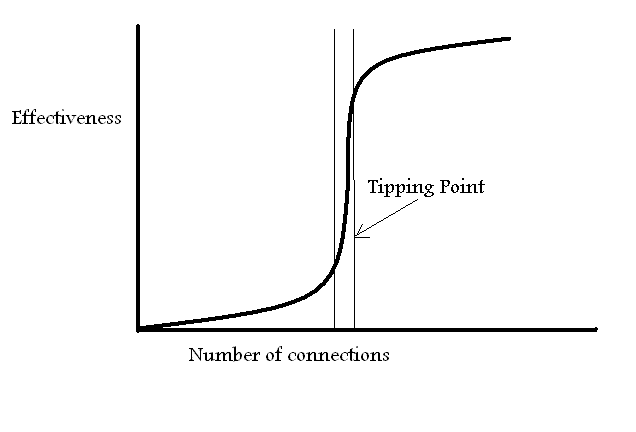
Book Review: The Tipping Point
How little things can make a big difference.
Why does one idea, message or brand spread around the globe in no time, while other messages have so many difficulties trying to reach their targeted audience? In ‘The Tipping Point’, author Malcolm Gladwell gives you some astonishing insights into how ‘social epidemics’ work. He explains how little things can have a global impact and how you can profit from these Tipping Point insights.
Just by following a number of basic rules and being aware of some of (non-)intuitive guidelines, you will be able to spread your message much more easily.
Curious? Read more to get some basic insights.
In ‘The Tipping Point’, Malcolm Gladwell reveals how an idea, brand or message can be introduced into society and how some – at first sight minor – elements can play a major role in the success of this introduction. What does an idea need to become an ‘epidemic’? Well, the message needs to be contagious. And to be contagious, the message has to be picked up by just a few, but preferably the right people, the message has to be ‘sticky’ and it has to be brought in the right context.
The law of the few
There are three types of people who can spread an idea in a contagious way: the connectors, the mavens and the salesmen. Connectors know a lot of people and are capable of bringing people from very different worlds together. Mavens accumulate market knowledge and share this knowledge with others. And last but not least, you need salesmen to do some very persuasive talking. These three categories of people have the power to spark word-of-mouth epidemics.
The Stickiness Factor
To create an epidemic, the message has to be ‘sticky’. Crucial question: is the message so memorable that it can create change or spur someone to action? Therefore you have to know your target group (and what actually makes them listen to your message). Kids for example, don’t watch a television program when they are stimulated and look away when they are bored (like adults). They watch when they understand and look away when they are confused. Approaching them as adults would have the opposite effect. This specific and ‘tested’ insight did the trick for Sesame Street.
The power of context
Next, the author illustrates that people are exquisitely sensitive to changes in context. Small causes can trigger major effects, like a bit of graffiti or a broken window can start a crime epidemic. Via a number of cases, Gladwell provides us with more insights into additional contextual factors that enhance change, like the leverage of peer pressure in smaller groups. He also explains how to bridge the chasm between early adaptors and early majority (by translating difficult concepts into ideas the rest of us can understand).
The author concludes that to start a word-of-mouth epidemic, resources ought to be solely concentrated on connectors, mavens and salesmen. He also states that our world, as much as we want it to, does not accord with our intuition.
Those who are successful at creating social epidemics do not just do what they think is right. They deliberately test their intuitions and act upon the test results. Furthermore he demonstrates that merely by manipulating the size of a group, we can dramatically improve its receptivity to new ideas. And by tinkering with the presentation of information, we can significantly improve its stickiness.
An intriguing read.

